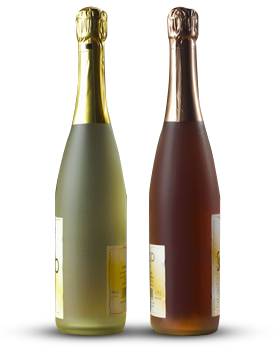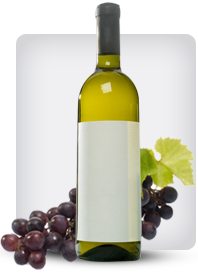

Tag: between
Difference Between Sonoma Valley and Dry Creek Valley Zinfandel
Posted onZinfandel, often called “America’s Heritage Grape,” thrives in California, particularly in Sonoma County. Two of its most renowned sub-regions—Sonoma Valley and Dry Creek Valley—produce distinct expressions of the varietal. While both regions share a passion for Zinfandel, differences in climate, soil, and winemaking traditions create unique profiles that appeal to different palates.
Climate and Terroir
Sonoma Valley Zinfandel
Sonoma Valley, nestled between the Mayacamas and Sonoma Mountain ranges, experiences a moderate, maritime-influenced climate. Morning fog and cool breezes from the Pacific Ocean slow ripening, allowing for balanced acidity and nuanced flavors. The valley’s diverse soils—including volcanic, clay, and loam—contribute to structured, elegant wines.
Dry Creek Valley Zinfandel
Dry Creek Valley, located further north, is warmer and drier, with less fog intrusion. The region’s well-drained, gravelly soils and ample sunshine produce riper, more robust Zinfandels. The resulting wines are often bolder, with higher alcohol levels and intense fruit concentration.
Flavor Profile
Sonoma Valley Zinfandel
Sonoma Valley Zins tend to be more restrained and food-friendly, with:
- Red fruit dominance (raspberry, cherry)
- Earthy, herbal undertones
- Medium body with firm tannins
- Bright acidity
Dry Creek Valley Zinfandel
Dry Creek Zinfandels are known for their opulent, fruit-forward character, featuring:
- Blackberry, plum, and jammy notes
- Spice (black pepper, clove)
- Full-bodied, velvety texture
- Higher alcohol warmth
Winemaking Styles
Sonoma Valley winemakers often emphasize balance and terroir expression, using restrained oak and moderate extraction. In contrast, Dry Creek producers frequently embrace boldness, with extended maceration and new oak barrels enhancing richness.
Conclusion
While both regions excel in Zinfandel production, Sonoma Valley offers refined, complex wines suited for pairing with grilled meats and Mediterranean cuisine. Dry Creek Valley delivers powerful, fruit-driven Zins that stand alone or complement hearty dishes like barbecue. The choice depends on personal preference—whether you favor elegance or intensity.
Difference Between Left Bank and Right Bank Merlot
Posted onMerlot is one of the most widely recognized red wine grapes, celebrated for its smooth, velvety texture and approachable fruit flavors. However, not all Merlot is the same—especially when comparing wines from Bordeaux’s Left Bank and Right Bank. While both regions produce exceptional Merlot-based wines, they differ significantly in terroir, blending styles, and flavor profiles.
Left Bank Merlot: A Supporting Role
The Left Bank of Bordeaux, home to prestigious appellations like Médoc and Graves, is best known for Cabernet Sauvignon-dominant blends. Here, Merlot plays a secondary role, often used to soften Cabernet’s tannins and add plush fruit notes. Left Bank Merlot tends to be more structured, with higher acidity and firmer tannins due to the gravelly, well-drained soils.
- Soil: Gravel, sand, and limestone
- Blending Style: Typically blended with Cabernet Sauvignon and Cabernet Franc
- Flavor Profile: Dark berries, cassis, tobacco, and earthy notes
Right Bank Merlot: The Star of the Show
On the Right Bank, in regions like Saint-Émilion and Pomerol, Merlot takes center stage. The clay-rich soils retain moisture, allowing Merlot to ripen fully, resulting in richer, more opulent wines. Right Bank Merlot is often blended with Cabernet Franc, which adds aromatic complexity without overpowering Merlot’s lush character.
- Soil: Clay and limestone
- Blending Style: Dominated by Merlot, sometimes with Cabernet Franc or Malbec
- Flavor Profile: Plum, black cherry, chocolate, and velvety tannins
Key Differences at a Glance
| Aspect | Left Bank Merlot | Right Bank Merlot |
|---|---|---|
| Primary Role | Supporting grape in blends | Main grape in blends |
| Soil Type | Gravel, sand | Clay, limestone |
| Flavor Profile | More structured, earthy | Softer, fruit-forward |
| Famous Regions | Médoc, Graves | Saint-Émilion, Pomerol |
Which One Should You Choose?
If you prefer bold, structured wines with firm tannins, Left Bank Merlot blends (such as those from Pauillac or Margaux) may appeal to you. However, if you enjoy supple, fruit-driven wines with a silky texture, seek out Right Bank Merlot-dominant bottles from Pomerol or Saint-Émilion.
Ultimately, both styles showcase Merlot’s versatility, proving that terroir and winemaking traditions shape this beloved grape in fascinating ways.
The Consistency in between Wine and Food
Posted onThe Consistency between Wine as well as Food
Wine is a social beverage which needs to be appreciated in the business of close friends and also. food.
The best combination in between food as well as wine is a resource of supreme bliss for every single lover. Both wine and also food could take advantage of the appropriate pairing. The appropriate wine can accentuate unexpected gastronomical facets of food as well as the other way around, wine can beam in a new light when accompanied by the ideal recipe. In order to enjoy the natural beauty of such mixes, one does not should regular expensive dining establishments as well as acquire overpriced wines. Instead, when integrating food and also wine it is one’s intuition and also curiosity that are of paramount value.
Many rules for reasonable food – wine combinations go back to the 19th century as well as are made by French chefs who take a trip around Europe showing other countries the French savoir-vivre. It is ever since that we understand that champagne complements oysters, white wine– with seafood, as well as red wine– with video game as well as red meats. Those guidelines, however, have been damaged sometimes throughout the years due to the fact that the nature of particular recipes and the rich wine range offered permit a much freer interpretation. For example, some red meats could be made extra pleasurable by stronger gewurztraminers.
A more useful approach for integrating wine with food is to prevent any kind of possible harshness between them. For instance, an outstanding wine stands out better when gone along with by a not so advanced dish that will bring out the wine’s fantastic qualities instead of combating with it. Specific wines and also foods have actually “located” each other for many years and represent particularly appropriate combinations. Normally those are the local wines and foods. Nearly all neighborhood meals go best with the wines from their areas.
Some ideas for making good food– wine choices:
Attempt to balance the weight of both, i.e. heavy meals and also those with a strong taste, such as game and red meat should be enjoyed with a similarly heavy wine. In many cases those are merlots but some full-bodied whites could be a similarly appropriate choice.
Dry wines might create an extremely undesirable sour or perhaps bitter taste if served with desserts. Normally deserts are offered with wines that go to least equally pleasant, otherwise sweeter.
Wines with high acidity go best with hefty, abundant in fat recipes. This is due to the fact that the high fat web content negates the influence of the acid.
High-tannin wines ought to be incorporated with foods rich in proteins. The healthy proteins integrate with the tannins, hence lessening the tannin taste. Wines made from grape ranges that include a great deal of tannins, such as Cabernet Sauvignon and Syrah are a superb match for red meats and also various other protein-rich foods. On the various other hand, high-tannin wines acquire an undesirable metal preference if integrated with fish and also various other seafood. Or they can have an incredibly bitter taste when combined with salty dishes.
So lastly … which wine? You could want the rules above when making your option yet don’t be blinded by them and also never take things for provided. Even when you are persuaded that you have actually located the best wine for a particular meal, a little modification, such as a bad yield, a change in the production technology, or various other, might disappoint you. So have an open mind and also prepare to experiment. Obviously, a great deal of times the results would be a little bit weird however that’s exactly what will make the whole experience intriguing!!
popular posts
-

Aging Potential of Premium Pinot Noir: Unlocking the Elegance of Time Among the world’s noble grape varieties, Pinot Noir holds a unique and almost mythical status
12-30 2025Celebrated for its ethereal aromatics, silky texture, and captivating expression of *terroir*, it is often considered the most transparent conduit from vineyard to glass. Read More
-

Food Pairing with Full-Bodied Cabernet Sauvignon Few wines command a table with the authority of a full-bodied Cabernet Sauvignon
12-29 2025With its deep, inky color and powerful structure built on robust tannins, dark fruit flavors, and often a hint of oak, it’s a wine Read More

